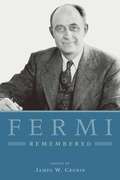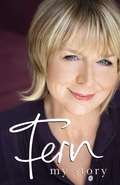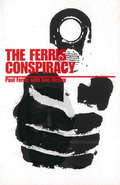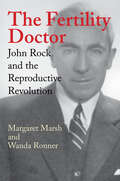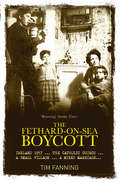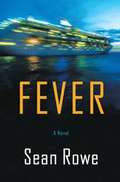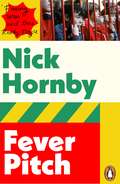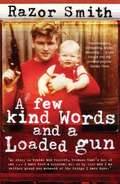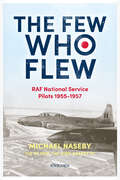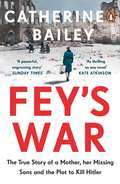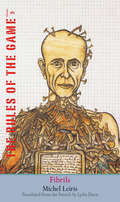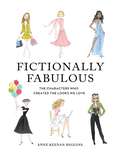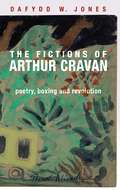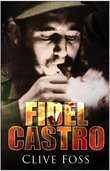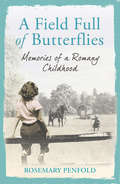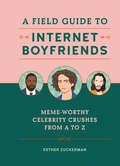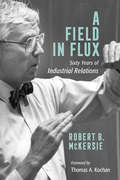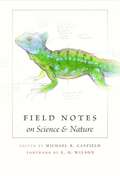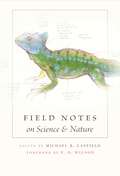- Table View
- List View
Fermi Remembered
by James W. CroninNobel laureate and scientific luminary Enrico Fermi (1901-54) was a pioneering nuclear physicist whose contributions to the field were numerous, profound, and lasting. Best known for his involvement with the Manhattan Project and his work at Los Alamos that led to the first self-sustained nuclear reaction and ultimately to the production of electric power and plutonium for atomic weapons, Fermi's legacy continues to color the character of the sciences at the University of Chicago. During his tenure as professor of physics at the Institute for Nuclear Studies, Fermi attracted an extraordinary scientific faculty and many talented students—ten Nobel Prizes were awarded to faculty or students under his tutelage. Born out of a symposium held to commemorate the hundredth anniversary of Fermi's birth, Fermi Remembered combines essays and newly commissioned reminiscences with private material from Fermi's research notebooks, correspondence, speech outlines, and teaching to document the profound and enduring significance of Fermi's life and labors. The volume also features extensives archival material—including correspondence between Fermi and biophysicist Leo Szilard and a letter from Harry Truman—with new introductions that provide context for both the history of physics and the academic tradition at the University of Chicago. Edited by James W. Cronin, a University of Chicago physicist and Nobel laureate himself, Fermi Remembered is a tender tribute to one of the greatest scientists of the twentieth century. Contributors: Harold Agnew Nina Byers Owen Chamberlain Geoffrey F. Chew James W. Cronin George W. Farwell Jerome I. Friedman Richard L. Garwin Murray Gell-Mann Maurice Glicksman Marvin L. Goldberger Uri Haber-Schaim Roger Hildebrand Tsung Dao Lee Darragh Nagle Jay Orear Marshall N. Rosenbluth Arthur Rosenfeld Robert Schluter Jack Steinberger Valentine Telegdi Al Wattenberg Frank Wilczek Lincoln Wolfenstein Courtenay Wright Chen Ning Yang Gaurang Yodh
Fermi Remembered
by James W. CroninNobel laureate and scientific luminary Enrico Fermi (1901-54) was a pioneering nuclear physicist whose contributions to the field were numerous, profound, and lasting. Best known for his involvement with the Manhattan Project and his work at Los Alamos that led to the first self-sustained nuclear reaction and ultimately to the production of electric power and plutonium for atomic weapons, Fermi's legacy continues to color the character of the sciences at the University of Chicago. During his tenure as professor of physics at the Institute for Nuclear Studies, Fermi attracted an extraordinary scientific faculty and many talented students—ten Nobel Prizes were awarded to faculty or students under his tutelage. Born out of a symposium held to commemorate the hundredth anniversary of Fermi's birth, Fermi Remembered combines essays and newly commissioned reminiscences with private material from Fermi's research notebooks, correspondence, speech outlines, and teaching to document the profound and enduring significance of Fermi's life and labors. The volume also features extensives archival material—including correspondence between Fermi and biophysicist Leo Szilard and a letter from Harry Truman—with new introductions that provide context for both the history of physics and the academic tradition at the University of Chicago. Edited by James W. Cronin, a University of Chicago physicist and Nobel laureate himself, Fermi Remembered is a tender tribute to one of the greatest scientists of the twentieth century. Contributors: Harold Agnew Nina Byers Owen Chamberlain Geoffrey F. Chew James W. Cronin George W. Farwell Jerome I. Friedman Richard L. Garwin Murray Gell-Mann Maurice Glicksman Marvin L. Goldberger Uri Haber-Schaim Roger Hildebrand Tsung Dao Lee Darragh Nagle Jay Orear Marshall N. Rosenbluth Arthur Rosenfeld Robert Schluter Jack Steinberger Valentine Telegdi Al Wattenberg Frank Wilczek Lincoln Wolfenstein Courtenay Wright Chen Ning Yang Gaurang Yodh
Fermi Remembered
by James W. CroninNobel laureate and scientific luminary Enrico Fermi (1901-54) was a pioneering nuclear physicist whose contributions to the field were numerous, profound, and lasting. Best known for his involvement with the Manhattan Project and his work at Los Alamos that led to the first self-sustained nuclear reaction and ultimately to the production of electric power and plutonium for atomic weapons, Fermi's legacy continues to color the character of the sciences at the University of Chicago. During his tenure as professor of physics at the Institute for Nuclear Studies, Fermi attracted an extraordinary scientific faculty and many talented students—ten Nobel Prizes were awarded to faculty or students under his tutelage. Born out of a symposium held to commemorate the hundredth anniversary of Fermi's birth, Fermi Remembered combines essays and newly commissioned reminiscences with private material from Fermi's research notebooks, correspondence, speech outlines, and teaching to document the profound and enduring significance of Fermi's life and labors. The volume also features extensives archival material—including correspondence between Fermi and biophysicist Leo Szilard and a letter from Harry Truman—with new introductions that provide context for both the history of physics and the academic tradition at the University of Chicago. Edited by James W. Cronin, a University of Chicago physicist and Nobel laureate himself, Fermi Remembered is a tender tribute to one of the greatest scientists of the twentieth century. Contributors: Harold Agnew Nina Byers Owen Chamberlain Geoffrey F. Chew James W. Cronin George W. Farwell Jerome I. Friedman Richard L. Garwin Murray Gell-Mann Maurice Glicksman Marvin L. Goldberger Uri Haber-Schaim Roger Hildebrand Tsung Dao Lee Darragh Nagle Jay Orear Marshall N. Rosenbluth Arthur Rosenfeld Robert Schluter Jack Steinberger Valentine Telegdi Al Wattenberg Frank Wilczek Lincoln Wolfenstein Courtenay Wright Chen Ning Yang Gaurang Yodh
Fermi Remembered
by Enrico Fermi James W. CroninNobel laureate and scientific luminary Enrico Fermi (1901-54) was a pioneering nuclear physicist whose contributions to the field were numerous, profound, and lasting. Best known for his involvement with the Manhattan Project and his work at Los Alamos that led to the first self-sustained nuclear reaction and ultimately to the production of electric power and plutonium for atomic weapons, Fermi's legacy continues to color the character of the sciences at the University of Chicago. During his tenure as professor of physics at the Institute for Nuclear Studies, Fermi attracted an extraordinary scientific faculty and many talented students—ten Nobel Prizes were awarded to faculty or students under his tutelage. Born out of a symposium held to commemorate the hundredth anniversary of Fermi's birth, Fermi Remembered combines essays and newly commissioned reminiscences with private material from Fermi's research notebooks, correspondence, speech outlines, and teaching to document the profound and enduring significance of Fermi's life and labors. The volume also features extensives archival material—including correspondence between Fermi and biophysicist Leo Szilard and a letter from Harry Truman—with new introductions that provide context for both the history of physics and the academic tradition at the University of Chicago. Edited by James W. Cronin, a University of Chicago physicist and Nobel laureate himself, Fermi Remembered is a tender tribute to one of the greatest scientists of the twentieth century. Contributors: Harold Agnew Nina Byers Owen Chamberlain Geoffrey F. Chew James W. Cronin George W. Farwell Jerome I. Friedman Richard L. Garwin Murray Gell-Mann Maurice Glicksman Marvin L. Goldberger Uri Haber-Schaim Roger Hildebrand Tsung Dao Lee Darragh Nagle Jay Orear Marshall N. Rosenbluth Arthur Rosenfeld Robert Schluter Jack Steinberger Valentine Telegdi Al Wattenberg Frank Wilczek Lincoln Wolfenstein Courtenay Wright Chen Ning Yang Gaurang Yodh
Fern: My Story
by Fern BrittonThe much-loved TV star Fern Britten tells her story for the first time in her Sunday Times bestselling memoir.For years now, Fern Britton has been widely loved as the presenter ofReady Steady Cook, and, more recently, co-presenter of This Morning with Philip Schofield. Never one to shy away from a good laugh or cry on national TV, she has none-the-less never talked about herself to the public, preferring to keep her private life private. Her warmth and humour, empathy and compassion, have made her feel like a best friend to millions on a daily basis, but no one knows the woman behind the sparkling smile.Now, for the first time, she is going to tell her story. And it is one that will strike a chord with women everywhere. Life as a child was not always easy, and she faced private and public challenges with her personal life, appearance and her career as she climbed the ladder to fame. Now a full-time working mum, with a very happy marriage to her second husband Phil Vickery, she is at the top of her game, and ready to tell it like it is. So put your feet up and get ready for a great read with Fern Britten.Fern Britten grew up in Buckinghamshire, and started her career on Westward Television, before moving to GMTV and Ready Steady Cook. She later co-presented This Morning with Philip Schofield, and has become a much sought after presenter for shows including Have I Got News For You, Soap Star Superstar and Celebrity Mr and Mrs. She recently wowed audiences with her performance on Strictly Come Dancing. She lives in Buckinghamshire with her husband Phil Vickery and their four children.
Fernando Pessoa: A Critical Introduction (The Portuguese-Speaking World)
by Dr Jerónimo PizarroA Critical Introduction proposes a new didactic and dynamic way of reading the great twentieth-century poet Fernando Pessoa (1888-1935). The aim is to present a holistic vision of this complex poet, promoting his literary geniality in order to better understand his orthonymic-heteronymic poetry. A guiding motif is Pessoa's own Be as plural as the universe. In leading the reader through the poet's published literary work, Jerónimo Pizarro allows an intimate perspective, alongside an academic one, to better understand the workings of Pessoa's mind and life. Discussion centres on the dilemmas an editor faces when editing posthumously. A prime question revolves around the genesis of Pessoa's heteronyms and orthonyms. Understanding is revealed by a critical perspective on the unity that exists in all of Pessoa's literary work. Interpretations of the poems; explanation of the profundity of The Book of Disquiet; and his isms of Paulism, Caeirism, Intersectionism and Cessationism, are discussed and analysed. The issue of Pessoa's astrological predictions his birth year and the effects of this event on Portuguese national history is debated. A chapter is devoted to the effect that translating Omar Khayyám's Rubáiyát had on the poet. The work contains eleven texts written by Pessoa in English (including an autobiographical note from 1935), a substantive dual language bibliography, and is highly illustrated with facsimiles of the poet's own written material. A Critical Introduction is essential reading for all scholars and students of Pessoa's literary output and life circumstances. The work has been written to appeal to cultural studies (arts and aesthetics) enthusiasts in general at both undergraduate and postgraduate level, but given the engagement of new critical material it also provides a structured resource for future research.
The Ferris Conspiracy
by Paul Ferris Reg McKayOn Glasgow's meanest streets life started well for the young Paul Ferris. How did he become Glasgow's most feared gangster, deemed a risk to national security?Arthur Thompson, Godfather of the crime world and senior partner of the Krays, recruited young Ferris as a bagman, debt collector and equaliser. Feared for his capacity for extreme violence, respected for his intelligence, Ferris was the Godfather's heir apparent. But when gang warfare broke, underworld leaders traded in flesh, colluding with their partners - the police. Disgusted, Ferris left the Godfather and stood alone. They gave him weeks to live.While Ferris was caged in Barlinnie Prison's segregation unit accused of murdering Thompson's son, Fatboy, his two friends were shot dead the night before the funeral and grotesquely displayed in a car on the cortége's route. Acquitted against all the odds, Ferris moved on, determined to make an honest living.They would not let him.The National Crime Squad, MI5, the police and two of the country's most powerful gangsters saw to that. A maximum-security prisoner, Ferris is known as 'Lucky' because he is still alive.This is one man's unique insight into Britain's crime world and the inextricable web of corruption - a revealing story of official corruption and unholy alliances.
The Fertility Doctor: John Rock and the Reproductive Revolution
by Margaret Marsh Wanda RonnerAs Louise Brown—the first baby conceived by in vitro fertilization—celebrates her 30th birthday, Margaret Marsh and Wanda Ronner tell the fascinating story of the man who first showed that human in vitro fertilization was possible.John Rock spent his career studying human reproduction. The first researcher to fertilize a human egg in vitro in the 1940s, he became the nation’s leading figure in the treatment of infertility, his clinic serving rich and poor alike. In the 1950s he joined forces with Gregory Pincus to develop oral contraceptives and in the 1960s enjoyed international celebrity for his promotion of the pill and his campaign to persuade the Catholic Church to accept it. Rock became a more controversial figure by the 1970s, as conservative Christians argued that his embryo studies were immoral and feminist activists contended that he had taken advantage of the clinic patients who had participated in these studies as research subjects. Marsh and Ronner’s nuanced account sheds light on the man behind the brilliant career. They tell the story of a directionless young man, a saloon keeper’s son, who began his working life as a timekeeper on a Guatemalan banana plantation and later became one of the most recognized figures of the twentieth century. They portray his medical practice from the perspective of his patients, who ranged from the wives of laborers to Hollywood film stars.The first scholars to have access to Rock’s personal papers, Marsh and Ronner offer a compelling look at a man whose work defined the reproductive revolution, with its dual developments in contraception and technologically assisted conception.
The Fethard-on-Sea Boycott: Ireland 1957 …The Catholic Church … A Small Village … A Mixed Marriage
by Tim FanningIn 1957, Sheila Cloney, Protestant wife of a Catholic farmer, fled from her home near the Wexford village of Fethard-on-Sea with her young daughters after refusing to bow to the demands of the local Catholic clergy to educate them as Catholics. In response, the priests launched a boycott of Fethard’s Protestant shopkeepers and farmers. Tim Fanning tells the story of one of the ugliest sectarian episodes to occur in the Republic and examines how the Catholic Church’s Ne Temere decree on mixed marriages resulted in one small rural community tearing itself apart.
Fever
by Sean RoweMatt 'Loose Cannon' Shannon is an ex-FBI agent turned head of security for the world's largest cruise line. It's a career move that owes more to his predilection for the bottle and a few well hidden skeletons than his fondness for the Miami sun. In the novel's explosive opening, Shannon's stepbrother, Jack Fontana, puts his back against the wall. At a waterfront reunion, Fontana gives Shannon what looks like a game controller-and before he knows what he's done, Shannon has sunk a freighter in Miami's shipping lane and his fingerprints are all over the device that sent the signal. Only once he's cornered does Shannon learn his stepbrother's real plan-a cruise ship job that could make enough money to last their lifetimes. Shannon thinks he's only providing backup and intelligence. And by the time he learns what's really going on, he's in too deep: the cruise ship has been hijacked and several people are already dead. FEVER is the story of Shannon's race to unravel the deadly labyrinth. With the help of a mysterious woman and his own instincts, he finds the one path that might allow him to survive.
Fever Pitch (Popular Penguins Series)
by Nick HornbyA famous account of growing up to be a fanatical football supporter. Told through a series of match reports, FEVER PITCH has enjoyed enormous critical and commercial success since it was first published in 1992. It has helped to create a new kind ofsports writing, and established Hornby as one of the finest writers of his generation.
A Few Kind Words and a Loaded Gun: The Autobiography of a Career Criminal
by Noel 'Razor' SmithA Few Kind Words and a Loaded Gun is the autobiography of convicted felon Noel 'Razor' Smith. An extraordinarily vivid account of how a tearaway kid from South London became a career criminal, it is both a searing indictment of a system that determinedly brutalized young offenders and a frank, unsentimental acknowledgement of the thrills of the criminal life. Shocking, fascinating and frightening by turns, it also reveals Razor Smith to be a remarkably talented writer.
The Few Who Flew: RAF National Service Pilots 1955-1957
by Michael NasebyThe Few Who Flew is an evocative memoir written by one of the last young men to train as a RAF pilot, gaining his ‘Wings’ in April 1957 just days before the end of National Service.Michael Morris as he was then (he is now Lord Naseby) was selected to do his flying training in Canada alongside fellow British and NATO pilots from seven different countries. Initial training was on Harvards at Moose Jaw in the Prairies and then jet flying on the world’s best trainer at the time, the T-33 Canadair Silver Star.The Few Who Flew reflects Michael’s inherent love of all aspects of aviation. The last three chapters cover ‘Churchill’s Secret Airfield’, RAF Tempsford, Bedfordshire near Michael’s home; his views on the future of aviation in a low carbon world, and then finishing with some provocative thoughts of a one-year ‘Service to the Nation ‘ for all young school leavers.
Fey's War: The True Story of a Mother, her Missing Sons and the Plot to Kill Hitler
by Catherine Bailey**Formerly published as The Lost Boys**'As thrilling as any novel. Bailey has an extraordinary talent for bringing history to life' Kate Atkinson'Remarkable. A powerful, engrossing story of a journey into the heart of darkness and final escape from it' Sunday Times___________________________________________________________In September, 1944, the SS march into a remote Italian castle, arrest a mother and seize her two sons, aged just two and three. If Hitler has his way she will never see them again. For Fey Pirzio-Biroli is the daughter of Ulrich von Hassell, executed days before after the failed assassination of the Fuhrer. Mercilessly cast into the Nazi death machine, Fey must cling to the hope that one day she will escape and rescue her lost children . . .An extraordinary story of resistance at the heart of the Second World War, Fey's War is an illuminating and devastating true account of great personal sacrifice, of loss and, above all, of defiance.___________________________________________________________'Riveting, important, reads like a terrifying thriller' Daily Telegraph'Heartbreaking. It started with a plot to kill Hitler. It ended in one of the most astonishing and moving stories of the war' Daily Mail'Extraordinary. A rich, deep, gripping read' Guardian'As thrilling as any novel. Bailey has an extraordinary talent for bringing history to life' Kate Atkinson
Fibrils: The Rules of the Game, Volume 3 (The Margellos World Republic of Letters #3)
by Michel LeirisA major publishing event: the third volume of Michel Leiris’s renowned autobiography, now available in English for the first time in a brilliant translation by Lydia Davis A beloved and versatile author and ethnographer, French intellectual Michel Leiris is often ranked in the company of Proust, Gide, Sartre, and Camus, yet his work remains largely unfamiliar to English-language readers. This brilliant translation of Fibrils, the third volume of his monumental autobiographical project The Rules of the Game, invites us to discover why Lévi-Strauss proclaimed him “incontestably one of the greatest writers of the century.” Leiris’s autobiographical essay, a thirty-five-year project, is a primary document of the examined life in the twentieth century. In Fibrils, Leiris reconciles literary commitment with social/political engagement. He recounts extensive travel and anthropological work, including a 1955 visit to Mao’s China. He also details his suicidal “descent into Hell,” when the guilt over an extramarital affair becomes unbearable. A ruthless self-examiner, Leiris seeks to invent a new way of remembering, probe the mechanisms of memory and explore the way a life can be told.
Fictionally Fabulous: The Characters Who Created the Looks We Love
by Anne Keenan HigginsTakes a one-of-a-kind, utterly irresistible tour of fashion history through our favorite style icons of film and television.Fictionally Fabulous is a full-color illustrated guide to dozens of beloved characters who changed the face of fashion: from the flapper era embodied by Louise Brooks to polka dot-studded housewife Lucy Ricardo, working-girl chic Mary Richards, tartan-skirted Cher Horowitz in Clueless, the Scandalous Olivia Pope, and all our favorite style stars in between. Each fashion hero is showcased in gorgeously whimsical style by Higgins, who offers stunning views of their most memorable moments, inspiration boards, and profiles describing each character's signature style and trend-setting influence.
Fictionally Fabulous: The Characters Who Created the Looks We Love
by Anne Keenan HigginsTakes a one-of-a-kind, utterly irresistible tour of fashion history through our favorite style icons of film and television.Fictionally Fabulous is a full-color illustrated guide to dozens of beloved characters who changed the face of fashion: from the flapper era embodied by Louise Brooks to polka dot-studded housewife Lucy Ricardo, working-girl chic Mary Richards, tartan-skirted Cher Horowitz in Clueless, the Scandalous Olivia Pope, and all our favorite style stars in between. Each fashion hero is showcased in gorgeously whimsical style by Higgins, who offers stunning views of their most memorable moments, inspiration boards, and profiles describing each character's signature style and trend-setting influence.
The fictions of Arthur Cravan: Poetry, boxing and revolution
by Dafydd JonesThe legendary poet and boxer Arthur Cravan, a fleeting figure on the periphery of early twentieth-century European avant-gardism, is frequently invoked as proto-Dada and Surrealist exemplar. Yet he remains an insubstantial phenomenon, not seen since 1918, lost through historical interstices, clouded in drifting untruths. This study processes philosophical positions into a practical recovery – from nineteenth-century Nietzsche to twentieth-century Deleuze – with thoughts on subjectivity, metaphor, representation and multiplicity. From fresh readings and new approaches – of Cravan’s first published work as a manifesto of simulation; of contributors to his Paris review Maintenant as impostures for the Delaunays; and of the conjuring of Cravan in Picabia’s elegiac film Entr’acte – The fictions of Arthur Cravan concludes with the absent poet-boxer’s eventual casting off into a Surrealist legacy, and his becoming what metaphor is: a means to represent the world.
The fictions of Arthur Cravan: Poetry, boxing and revolution
by Dafydd JonesThe legendary poet and boxer Arthur Cravan, a fleeting figure on the periphery of early twentieth-century European avant-gardism, is frequently invoked as proto-Dada and Surrealist exemplar. Yet he remains an insubstantial phenomenon, not seen since 1918, lost through historical interstices, clouded in drifting untruths. This study processes philosophical positions into a practical recovery – from nineteenth-century Nietzsche to twentieth-century Deleuze – with thoughts on subjectivity, metaphor, representation and multiplicity. From fresh readings and new approaches – of Cravan’s first published work as a manifesto of simulation; of contributors to his Paris review Maintenant as impostures for the Delaunays; and of the conjuring of Cravan in Picabia’s elegiac film Entr’acte – The fictions of Arthur Cravan concludes with the absent poet-boxer’s eventual casting off into a Surrealist legacy, and his becoming what metaphor is: a means to represent the world.
Fidel Castro (Sutton Pocket Biographies Ser.)
by Clive FossFidel Castro is a dynamic and charismatic leader, who has led Cuba through success and failures since 1959. Son of a rich landowner, he became a radical revolutionary who attempted to overthrow the government in 1956 with a tiny band of followers. Using propaganda and subversion as much as sudden attacks from his mountain hideout, he gained victory in 1959. He liberated his country from one dictator and the overwhelming influence of the United States, only to turn it into another dictatorship firmly under the control and patronage of the Soviet Union. The failure of the American attack at the Bay of Pigs in 1961 added to his reputation, while the missile crisis of 1962 put Cuba right at the centre of the Cold War. Later, by sending his army to Africa and supporting guerrilla movements in Latin America, he made Cuba a signficant player on the world stage. Despite many attempts to remove him and the economic collapse of the USSR, Castro survived and in 1999, celebrated 40 years of his regime.
A Field Full of Butterflies: Memories of a Romany Childhood
by Rosemary PenfoldGypsy tales from the SUNDAY TIMES bestselling author...Rosemary Penfold was born in 1938 in a traditional Gypsy wagon, and grew up in the fields of the English countryside. In this beautiful and evocative memoir, she recounts her life within a loving extended family and small but close-knit community.From early memories of her father bringing home oranges during the war, to the simple beauty of a field full of butterflies on a hot summer's day, Rosemary's stunningly elegant narrative captures the love and losses, hopes and struggles, traditions and prejudices that bound her to her family and helped her adapt to a fast-changing world. Rosemary's story is a moving testament to a forgotten world and a rapidly disappearing way of life.
A Field Guide to Internet Boyfriends: Meme-Worthy Celebrity Crushes from A to Z
by Esther ZuckermanFrom Keanu Reeves and Idris Elba to Timothe Chalamet, A Field Guide to Internet Boyfriends is the ultimate celebration of the suave, sexy, sensitive, and silly celebrities who have captured our hearts and memes! Handsome and heartfelt, with winning smiles and pinnable Tweets -- this is what Internet Boyfriends are made of. But who are these meme-able men, and what makes them catch fire online? Discover the answers to these questions and more in A Field Guide to Internet Boyfriends, an interactive exploration of our collective crushes. Entertainment journalist Esther Zuckerman breaks down the world of Internet Boyfriends -- and even a few Internet Girlfriends -- from documentary-style "spotting guides" to discussions on the key categories of boyfriend, like Sensitive Souls, Beautiful Boys and Daddys. A playful, teen magazine-style quiz -- to help readers find their ideal crush -- and in-depth profiles of some of the most beloved Internet Boyfriends and Girlfriends, from Ryan Gosling (the original) to Harry Styles (the Gen Z icon) to Janelle Monae (the space queen), round out this fully-illustrated romp through the celebs behind the memes.
A Field in Flux: Sixty Years of Industrial Relations
by Robert B. McKersieA Field in Flux chronicles the extraordinary journey of industrial and labor relations expert Robert McKersie. One of the most important industrial relations scholars and leaders of our time, McKersie pioneered the study of labor negotiations, helping to formulate the concepts of distributive and integrative bargaining that have served as analytical tools for understanding the bargaining process more generally.The book provides a window into McKersie's life and work and its impact on the evolution of labor and industrial relations. Spanning six decades, the reader learns about the intersection of labor and the Civil Rights movement, the watershed moment of the Air Traffic Controller's Strike, his relationship with George Schultz, the shift from labor relations to human resource management, and McKersie's role in the seminal cases (Motorola, GM, Toyota) of the labor movement. A Field in Flux serves two important functions: it demonstrates how people have influenced past employment policies and practices when called to action in critical situations, and it seeks to instill confidence in those who will be called on to address the big challenges facing the future of work today and in the years to come. During a time when the basic values of industrial relations are being challenged and violated, McKersie argues that the profession must adapt to the changing world of work and not forget about the value placed on efficiency, equity, and inclusive employment policies and practices.
Field Notes on Science & Nature
by Michael R. CanfieldWhat did George Schaller note when studying the lions of the Serengeti? How does Piotr Naskrecki use relational databases and electronic field notes? In what way is Bernd Heinrich’s approach “truly Thoreauvian,” in E. O. Wilson’s view? Pioneering a new niche in the study of plants and animals in their native habitat, Field Notes on Science and Nature allows readers to peer over the shoulders and into the notebooks of a dozen eminent field workers, to study firsthand their methods, materials, and fleeting impressions. Recording field observations is an indispensable scientific skill, but researchers are not generally willing to share their personal records. Here, for the first time, are reproductions of actual pages from notebooks. And in essays abounding with fascinating anecdotes, the authors reflect on the contexts in which the notes were taken. Covering disciplines as diverse as ecology, paleontology, anthropology, botany, and animal behavior, Field Notes offers specific examples that professional naturalists can emulate to fine-tune their own field methods, along with practical advice that amateur naturalists and students can use to document their adventures.
Field Notes on Science & Nature
by Michael R. CanfieldWhat did George Schaller note when studying the lions of the Serengeti? How does Piotr Naskrecki use relational databases and electronic field notes? In what way is Bernd Heinrich’s approach “truly Thoreauvian,” in E. O. Wilson’s view? Pioneering a new niche in the study of plants and animals in their native habitat, Field Notes on Science and Nature allows readers to peer over the shoulders and into the notebooks of a dozen eminent field workers, to study firsthand their methods, materials, and fleeting impressions. Recording field observations is an indispensable scientific skill, but researchers are not generally willing to share their personal records. Here, for the first time, are reproductions of actual pages from notebooks. And in essays abounding with fascinating anecdotes, the authors reflect on the contexts in which the notes were taken. Covering disciplines as diverse as ecology, paleontology, anthropology, botany, and animal behavior, Field Notes offers specific examples that professional naturalists can emulate to fine-tune their own field methods, along with practical advice that amateur naturalists and students can use to document their adventures.
